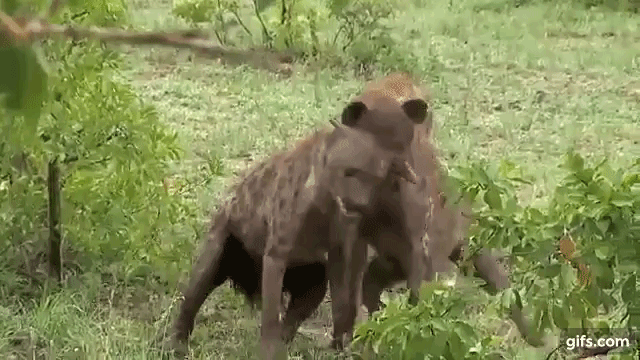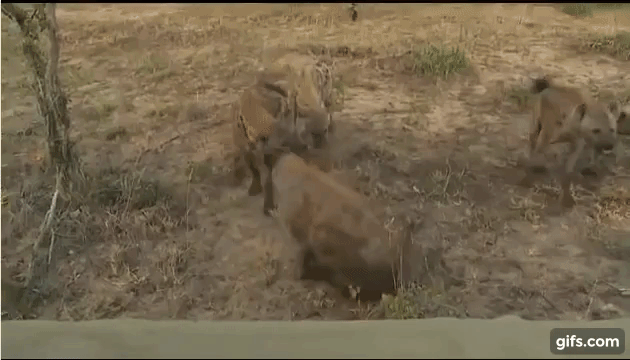|
|
Post by dinosauria101 on Nov 11, 2019 22:08:04 GMT 5
So, from what I can tell across the internet and scientific communities (with the exception of that study that gave a Deinonychus and a similar sized American alligator close bite forces), most regard dromaeosaurine bites as secondary weapons, and not very good ones at that - apparently, a 111 kg Deinonychus has a 30 kg wolf's bite force. But after looking a bit closer, a few things stood out. -Dromaeosaurine skulls are not really robust like tyrannosaurid skulls. -They don't have crushing dentition, but rather recurved and highly serrated teeth. -They have rather large heads relative to their size - larger than some carnosaurs even! For example, a 111 kg Deinonychus has a 41 cm skull, which when scaled up to 164 cm gives you a 7.1 ton animal. To put that into perspective, Deinonychus has a proportionately larger head than Giganotosaurus (which would have to be MUCPv-95 for a skull that big, and it would be 8.2 tons as opposed to 7.1 tons). -From what we know, carnosaurs' heads were their first and foremost weapons. I don't really see a head proportionately bigger than one as a secondary or weaker weapon. -The skull morphology seems very close to carnosaurs - more elongate than bone-crushers like tyrannosaurids and abelisaurids, large fenestrae, etc. They also have highly serrated teeth as previously stated, so they most likely did not rely on bite force and instead used cutting like carnosaurs did. Here's a comparison of Deinonychus and Giganotosaurus skulls scaled to the same length to illustrate my point:  My hunch could be incorrect, but I feel they may have used their jaws in a similar manner to big carnosaurs given what I just said above. dromaeosauridae117 , you may wish to participate in this thread. |
|
|
|
Post by creature386 on Nov 11, 2019 23:19:55 GMT 5
Sakamoto had a similar opinion. royalsocietypublishing.org/doi/10.1098/rspb.2010.0794That being said, the paper is nine years old and the sentence comparing dromaeosaurids to Komodo dragons seems like a throwaway line. Even in your picture, the skull of the Deinonychus appears to be clearly more fragile than that of the Giganotosaurus (although, a 2D comparison can never gives us the full picture). |
|
|
|
Post by dinosauria101 on Nov 12, 2019 0:11:35 GMT 5
Well, yeah, it is 9 years old. But good to see someone thinks so too. After thinking it over a bit more, I think dromaeosaurs most likely did the best of both worlds – leaping onto a prey item, slashing with their hand claws and their killing claws, and taking large bites with their jaws. That’s a lot more efficient than one or the other. Regarding skull fragility, I found some more images from other angles and both look similar in strength:   Very very similar |
|
|
|
Post by Verdugo on Nov 12, 2019 1:13:24 GMT 5
That being said, the paper is nine years old and the sentence comparing dromaeosaurids to Komodo dragons seems like a throwaway line. Whaaat? What's so wrong with the Ora analogy? The authors implied the possibilities of using post-cranial muscles to argument the weak bite (as in the case of Ora) and i can't see anything wrong with that. It's very common for modern Carnivores (including Mammals too) to argument their bite with the use of post-cranial forces (pulling, shaking, etc). Studies on Theropods neck myology also suggests the use post-cranial forces to argument their bites (pull/shake in T-rex, downward strike in Allosaurus, skull depressing in Ceratosaurus). Not sure why you think it's inappropriate when the authors suggested such possibilities for Dromaeosaurids... Also, a 9 years old paper is not even that old!. Any paper post 2000 should already be considered as 'recent'. Even those papers in 80s or 90s can be excellent too. Can't really see any problems here. 2D level arms are still being used even in 2019 because researchers can employ the technique on a very large sample size (useful for comparing many different groups of animals like in this case)
Dinosauria: comparing and eyeballing skull pictures has to be the worst way to determine its strength... Also, there is no way a Deinonychus could have Alligator Bite force. |
|
|
|
Post by creature386 on Nov 12, 2019 1:40:16 GMT 5
I was just being cautious as it's been a while since I partook in these dromaeosaurid debates and I've been locked out of the loop quite often.
|
|
|
|
Post by dinosauria101 on Nov 12, 2019 3:06:44 GMT 5
Dinosauria: comparing and eyeballing skull pictures has to be the worst way to determine its strength... Also, there is no way a Deinonychus could have Alligator Bite force. Well why would it be unreliable? Design and jaw mechanics seem close all around as I pointed out in the OP. And just for the record, no, I don't trust that alligator study. |
|
|
|
Post by creature386 on Nov 12, 2019 3:27:34 GMT 5
Because I'm not sure how we can argue against the eyeballing of one person. All I can say is that they don't look even nearly equally robust to me. Deinonychus has larger fenestra and a more compressed snout (both dorsoventrally and especially laterally).
EDIT: Of course, not all of this makes Deinonychus' skull different, but these differences are at least enough to assume functional differences.
|
|
|
|
Post by dinosauria101 on Nov 12, 2019 5:37:48 GMT 5
Yes the fenestrae are bigger, but not so significant as to make the skull a LOT weaker.
As for compression, the very top looks more pinched but robusticity is equal elsewhere
|
|
|
|
Post by Verdugo on Nov 12, 2019 8:44:54 GMT 5
Well why would it be unreliable? Design and jaw mechanics seem close all around as I pointed out in the OP. You really cannot assess how strong or weak the skull of animal really is based only on superficial qualitative factors like this animal's fenestrates 'look' bigger or this animal's skull 'look' thicker. I don't know any Skull strength studies on Dromaeosaurids' skull so i cannot comment much on that. On the other hand, Allosauroid's skulls are actually not weak at all (at least in dorsalventral strength) despite there 'fenestrated' appearance. For instance, Rayfield 2001 pointed out that the fenestrates in Allosaurus actually help it to disperse the stresses. Also, see Snively 2006, fig 13B, the dorsalventral strength of Allosauroid is actually comparable to that of Tyrannosaurids (except for T-rex of course) of similar skull length. According to Creature's source, Allosauroid actually have high muscle leverage so their Bite forces (while not on Tyrannosaurids level) are actually still quite strong. The same cannot be said for most Dromaeosaurids (except for Dromaeosaurus) who falls into the 'weak, fast' category. I don't know any studies on Dromaeosaurids' neck muscles so i don't know how they would use it to increase the lethality of their bite. In order Theropods, their neck muscles actually help them to accentuate their Bite lethality beyond what would be expected from just their skulls. For instance, T-rex's neck muscles are adapted for pulling backwards and shaking. This means that after T-rex chomped down on its preys, it will pull back and shake the hell out of its preys using its post-cranial muscles to rip its preys apart (the insane BF of T-rex is merely just a tip of its killing aparatus). Like what you see in Carnivorans like Hyenas for instance:   For what it is worth, study on their tooth ( Torices 2018) suggests that Dromaeosaurids also employed similar puncture-pull technique to that of Tyrannosaurids (though obviously would not be as extreme). However,they probably did not shake like Tyrannosaurids did |
|
|
|
Post by theropod on Nov 12, 2019 13:19:38 GMT 5
Fenestration doesn't weaken the skull, in fact the developmental mechanism by which they are formed is resorption of bone where there are no stresses acting on them, so bone only gets resorbed where it isn't needed anyway.
|
|
|
|
Post by creature386 on Nov 12, 2019 13:26:28 GMT 5
I'm aware, but I was wondering if there can be too much of a good thing. I'm sure a skull that was 99% fenestra and 1% bone would be very weak (of course, that would assume an animal that almost never subjects ist skull to any stress whatsoever). That being said, assuming the optimimum lies closer to a Giganotosaurus than to a Deinonychus was a bit circular reasoning, I must admit.
|
|
|
|
Post by theropod on Nov 12, 2019 13:39:01 GMT 5
Well, a skull that's 99% fenestrae and 1% bone would be unlikely to ever develop. I'm just saying that we cannot automatically say that more fenestration means a weaker skull, since bone would be left in the places where it actually mattered. Fenestration may even allow more bone to grow where it is most needed to resist forces, because it isn't being wasted in locations where it isn't useful.
|
|
|
|
Post by creature386 on Nov 12, 2019 15:46:45 GMT 5
That makes me wonder one thing though: Wouldn't the overall stress an animal subjects its skull to influence the percentage of bones that must deal with said stress. I mean, not all animals have equally large fenestrae. Or does this depend on other parameters, like skull shape?
|
|
|
|
Post by dinosauria101 on Nov 12, 2019 16:44:06 GMT 5
So, Verdugo, you do have a point that visuals are not always the best. We can at least see similar design. If they did employ puncturing it could've been in between carnosaurs and tyrannosaurs. |
|
|
|
Post by theropod on Nov 13, 2019 1:56:41 GMT 5
That makes me wonder one thing though: Wouldn't the overall stress an animal subjects its skull to influence the percentage of bones that must deal with said stress. I mean, not all animals have equally large fenestrae. Or does this depend on other parameters, like skull shape? Yes of course. If an animal excerts less force, there will be less stress, which would result in less bone being needed (though where and how much exactly also depends on skull shape). I just meant it is a non sequitur. We cannot automatically assume that a more fenestrate skull is also weaker. That’s why we need complex methodologies like FEA to actually quantitatively compare how strong skulls are. Precisely because animals have different skull shapes. |
|